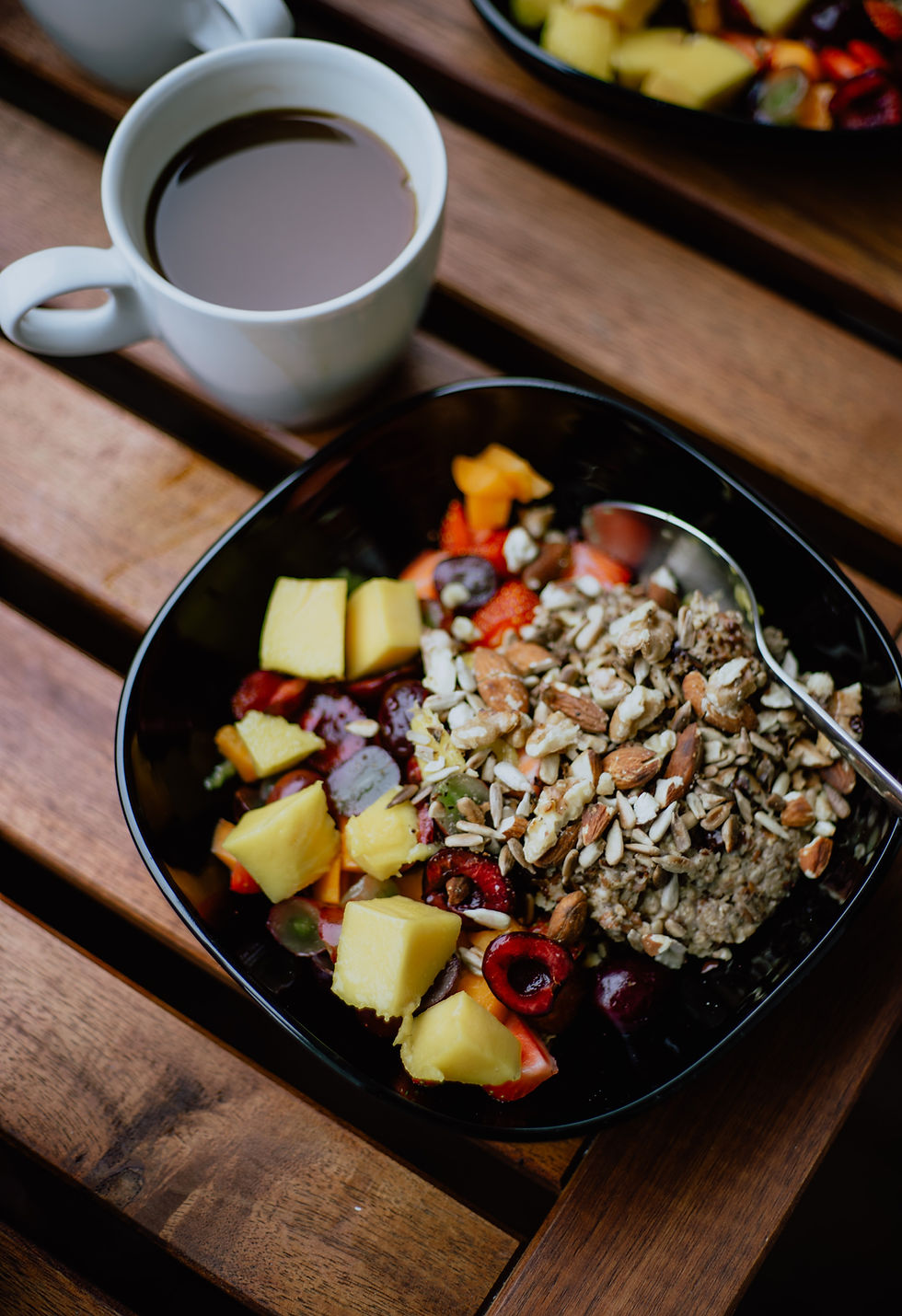The Secret to Feeling More Satisfied after Meals
- lifeinbalancerd

- Apr 8, 2021
- 3 min read
Ever find yourself 30 minutes after a meal staring into the refrigerator or pantry thinking about what to eat next? One of the most frustrating things when starting a new diet or weight loss program is that constant hunger and the uncertainty of what you should eat or if you can just "power through".
Fiber is your answer!
Weight Loss Tip #12 - Eat More Fiber

When you think of fiber, you might picture a grainy, orange juice drink that your parents or grandparents mixed together and drank everyday - religiously. Although they may have been on to something, you don't have to drink sawdust in order to get the benefits of fiber. A couple weeks ago, we talked quite a bit about fiber - the importance of having fiber in your diet and the impacts it has on weight management. To see that blog post - click here! This week I want to expound upon the topic of fiber and discuss some of it's benefits, how much you need and how you can incorporte it into a healthy diet.
Types of fiber
There are two types of fiber - soluble and insoluble.
Soluble fiber is dissolvable and created a sort of "gel" that helps improve digestion and may help reduce cholesterol and blood sugar which can reduce risk of diabetes or help with diabetes management.
Insoluble fiber does not dissolve and is considered the "bulk" that helps attract water into the digestive system which promotes bowel health and regularity. Both types of fiber are beneficial for overall health and are found in different amounts in most fiber contain foods.
Benefits of fiber
We spoke in a previous week regarding the importance of gut health.
Gut health plays a huge role in numerous health issues and even the mental aspect of health, food choices, energy levels, hormone function, and much more. Fiber also has a large impact on appetite suppression and feeling more satisfied between meals. The reason for this is fiber takes longer for your body to digest than simple sugars or simple carbohydrates (such as white bread/rice).
Fiber also helps keeps digestion more regular, decreases bloating and discomfort following meals.
How much fiber is recommended
The recommended intake of fiber is 25-30 grams a day.
Unfortunately, most Americans only consumer 10-15 grams of fiber.
Below is a list of foods to incorporate in order to increase your daily fiber intake.
Almonds - 16 grams in 1 cup
Chia seeds - 9 grams in 1 ounce
Fruits/Vegetables - 3-7 grams in 1 cup
Beans - 10-12 grams in 1 cup
Lentils - 13 grams in 1 cup
Avocado - 10 grams in 1 cup
Oats - 16 grams in 1 cup
Popcorn - 14 grams in 1 cup

My challenge for you this week is to incorporate fiber into every meal (if you've been adding your fruits and vegetables like we discussed two weeks ago, you're already off to a great start!) Then, start paying attention to the benefits from satiety between meals and better digestion to possible long term benefits - healthy cholesterol levels and appropriate blood sugar levels. I'm here for you and I believe in you!

P.S. If you want to increase your fiber intake, it’s important to increase your servings slowly over time. In order to see all of the benefits of eating fiber, you also need to make sure that you’re drinking enough water every day.




Comments